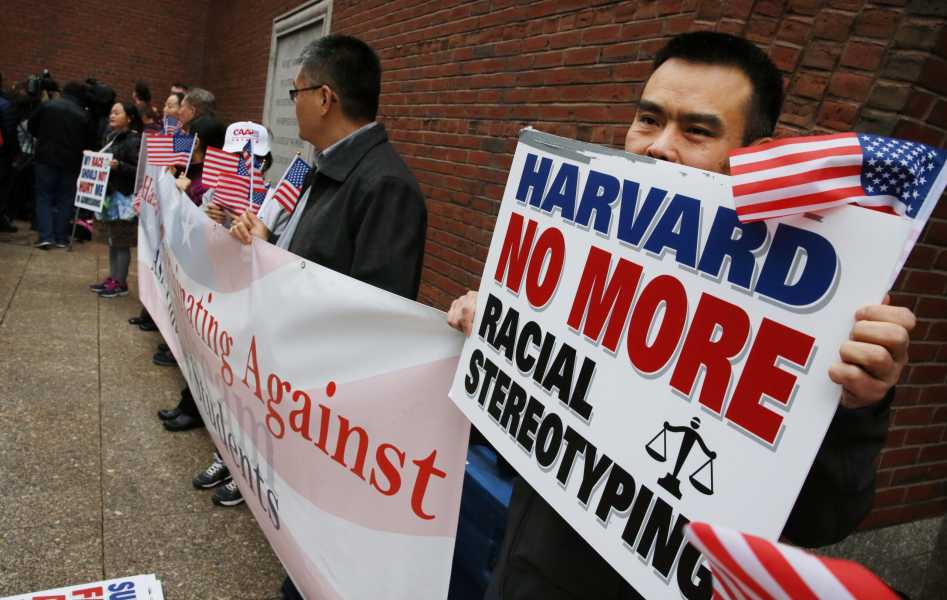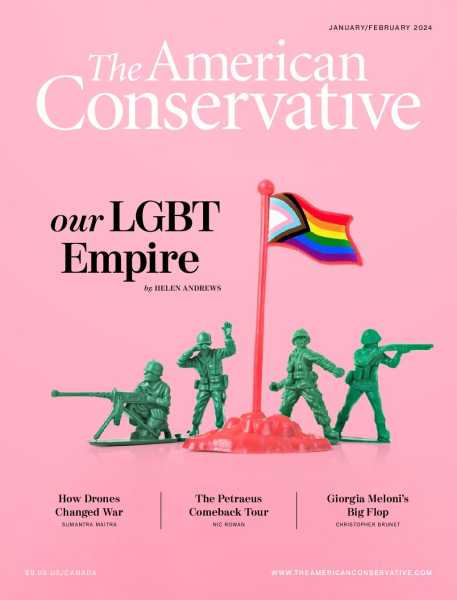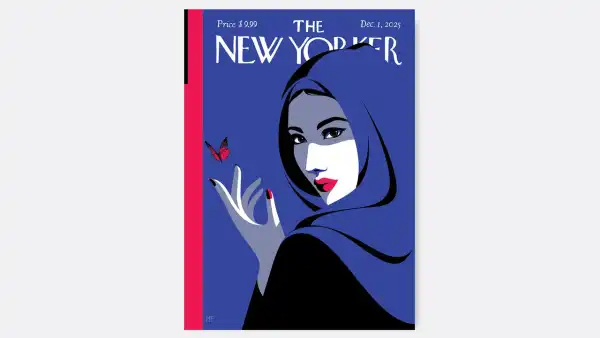An adventure in alumni interviewing shows how difficult enforcing SFFA v. Harvard will be.

What is a college for? The naive answer has something to do with education and research. The Cold War and memories of Los Alamos kept the research portion going strong: The schools were vehicles for funding and directing inventors of weapons, medical scientists, propagandists of the Free World—whoever and whatever it took to beat Ivan and the threat of global communism. University research culture has never reoriented away from this Cold War throw-stuff-at-the-wall approach, which is why you see these perennial lists of dumb government-funded research projects dutifully chronicled by libertarian think tanks and publications.
The mass irruption of Americans into colleges following the Second World War, thanks to the G.I. Bill, changed the education side of the question. Not everyone chasing a diploma was going to become a specialist on the research side of the university; what does a middle manager at GE need to know? The collapse of shared public standards about what constitutes an education led to a confused pluralism regarding what exactly universities were supposed to be doing with their students. At the same time, a general decline in primary and secondary schooling hobbled what educators could do with a large portion of their student bodies.
At some point, a bachelor’s degree became a credential, a necessary acquisition on the American cursus honorum. To ascend to the heights of American society, you need a college degree. This transformation made going to college primarily about power.
Race-based affirmative action was a rational decision in a context where college admissions was about power. If the goal is a group’s full political participation, and specifically its full investment in the existing political order, its cooption—and the cooption of its elites especially—into the overarching order is necessary. And not necessary just in an abstract, law-of-noncontradiction way: The era of accelerated affirmative action followed a 1969 episode in which the Black Panthers took over Yale’s campus on an invitation from the school’s disaffected Black Student Alliance. (For those tracking historical trivia at home, the rally was Bobby Seale’s alibi for the torture and murder of Alex Rackley, carried out by Panther lieutenants on Seale’s orders.) Affirmative action was a way to buy literal peace.
Yet, in their muddled ways, the universities hung onto the educational element, or at least a student-sorting element. Schools that take on students who are likely to be successful will tend to have a more affluent alumni donor pool. If the school can present a case that its education is in part responsible for those students’ success—a largely unquestioned premise—it will attract more applicants, about whom it can be pickier. Through the magic of the market, a virtuous cycle comes into being. And, of course, there are some who work in higher education who are sincerely invested in teaching students and prefer to pass on their knowledge to the interested and the capable.
This educational vision, even in its attenuated form, is a poor fit with the logic of power, the logic of affirmative action. To get around the inherent problem of fulfilling racial makeup goals by accepting less qualified students, Yale and other schools experimented with “neo-segregation” —establishing separate academic programs within the university for minority students who required extended remediation. The remnants of these programs can still be found in artifacts like voluntary separate graduation ceremonies.
Yet the consensus solution was merely to try to square the circle with less qualified candidates, sometimes with disastrous results. Regents of the University of California v. Bakke (1978) dealt with a white veteran and NASA engineer, Allan Bakke, who was rejected from University of California–Davis medical school on racial grounds. The case set the modern affirmative action standard, which allowed the use of race in admissions considerations but forbade quotas and numerical systems. (An all-time classic piece of evasion from the Court; how do you know how much to weight race in an application package unless you are looking for a particular demographic makeup in your student body?) Patrick Chavis, the man who was admitted instead of Bakke, went on to lose his medical license following chronic incompetence in practice. The California medical board alleged an “inability to perform some of the most basic duties required of a physician.”
This was, in rough outline, the state of college admissions until 2023.
As one might expect in a situation that is fundamentally about allotting power, not everyone was on board with this arrangement. A college admissions process based primarily on academic merit was itself the product of a liberal effort to include outgroups with growing power, the end of Jewish quotas and the interview-based old boys’ system. Affirmative action reversed that reform, once again cutting seats for and increasing competition among the groups that would dominate a merit-based admissions system.
One group in particular, really. A 2013 internal study at Harvard found that the undergraduate body would be plurality Asian—43 percent—if it accepted students on purely academic considerations. (Per that same study, the student body would be less than 1 percent black.)
Students For Fair Admissions describes itself as “a nonprofit membership group of more than 20,000 students, parents, and others who believe that racial classifications and preferences in college admissions are unfair, unnecessary, and unconstitutional.” SFFA, led by the lawyer and American Enterprise Institute fellow Edward Jay Blum, brought suit against Harvard University in 2014 for discriminating against Asian-American applicants on the basis of race.
SFFA demonstrated that race was used as a distinct factor within Harvard’s admissions rubric that could decide an applicant’s acceptance or rejection. The group also noted that the average “personality” score of Asian students used in another phase of the admissions process appeared to be artificially depressed. In June 2023, the Supreme Court found that the Harvard system violated the 14th Amendment and the Civil Rights Act of 1964, deciding Students for Fair Admissions v. Harvard and its companion case, Students for Fair Admissions v. University of North Carolina, in favor of SFFA and, per the press, “ending affirmative action.”
A variety of negative responses followed the decision, including proposals for proxies for and refinements of race-conscious admissions. Some commentators argued that colleges should simply refuse to comply. Richard Rothstein, a fellow at the Economic Policy Institute, wrote in the Atlantic, “University presidents should have no less courage. They should continue to implement race-specific affirmative action, in defiance of the Supreme Court.”
Courage can be found in unlikely places, but some are more unlikely than others. In any case, any mass civil disobedience would gild the lily. The Court’s ruling doesn’t actually stop the use of race as a factor in admissions. From Chief Justice John Roberts’s opinion:
A benefit to a student who overcame racial discrimination, for example, must be tied to that student’s courage and determination. Or a benefit to a student whose heritage or culture motivated him or her to assume a leadership role or attain a particular goal must be tied to that student’s unique ability to contribute to the university. In other words, the student must be treated based on his or her experiences as an individual—not on the basis of race.
If you believe a theory of an all-pervading systemic racism, any plausible achievement from a non-white student—including, in extreme iterations of racial rhetoric, the achievement of continuing to be alive—is an individual achievement in the face of racism. The decision continues:
And in doing so, they have concluded, wrongly, that the touchstone of an individual’s identity is not challenges bested, skills built, or lessons learned but the color of their skin.
For the racialists, these are the same thing. Roberts writes for an audience that is generally bought into the Anglo-American legal tradition and its vision of society as a collection of individuals under an impartial law. If your vision of society is a collection of racial groups containing individuals under a variety of economic and state systems, each infused with racial preference, every “challenge bested” will tend to refer back to race.
The Department of Justice and the Department of Education certainly seem to take this approach in their advisory documents for colleges:
Following the Supreme Court’s recent decision, the President and Vice President called on colleges, universities, and other stakeholders to seize the opportunity to expand access to educational opportunity for all students and to build diverse student bodies, including by recognizing and valuing students who have overcome adversity…
For example, a university could consider an applicant’s explanation about what it means to him to be the first Black violinist in his city’s youth orchestra or an applicant’s account of overcoming prejudice when she transferred to a rural high school where she was the only student of South Asian descent. An institution could likewise consider a guidance counselor or other recommender’s description of how an applicant conquered her feelings of isolation as a Latina student at an overwhelmingly white high school to join the debate team.
This is hardly the banishment of race-conscious admissions. It is just the invitation for a set of more or less complicated proxies for the simple numerical systems. The ruling in SFFA v. Harvard was written for normal people, but normal people aren’t in charge of college admissions.
The nature of the “whole-person” approach to admissions—that is to say, an approach that is not based exclusively on academic performance—is that there are plenty of places to put a thumb on the scale sub rosa. Take Harvard’s alumni interview.
The interview is the final element in a student’s admissions package. The admissions department considers the applicant’s written materials—transcripts, test scores, essays, occasionally ancillary materials like art portfolios—and routes competitive students to the local chapters of the alumni network for an interview. The interview is meant to supplement the written application with details about a student’s personal qualities and“non-cognitive attributes,” particularly anything unusual that would not be discernible in the written materials, and to gain insight using an alumnus’ local knowledge and context. The goal is to reinforce the existing evaluation of the admissions department or to raise questions that will prompt a reevaluation.
The concrete product of the interview is a worksheet with ratings and written reports. It uses a numerical scheme to come up with a “contribution rating” and an “overall rating”: 1, for students of unusually desirable qualities, to 5, students who seem unlikely to fit well at Harvard on a given axis. The “contribution rating,” which is concerned with what a student brings to Harvard qua community, has three sub-ratings (each, inscrutably, summarized with a completely different grammatical construction) that use the same numerical scale: “openness to new ideas and new people,” “overcome challenges,” and “what kind of roommate would this student be?” Each rating includes a prompt for written explanation.
Students who are referred to the interview round tend to have a 3 (good but unremarkable fit) as their baseline score in any given category. The 1 is rare—usually reserved for the children of heads of state, musical prodigies, already published authors, and so on—so 2 is usually the ceiling for a competitive student.
In addition to the qualities measured by numerical scheme, there are three areas where the interviewer is prompted for written comment: “Extracurricular, Athletic, Community Involvement, Employment, and Family Commitments”; “Intellectual Qualities”; and “Local Context.”
Looking at the form, it is easy to see how an interviewer of particular ideological alignment could achieve the same effect as a race-conscious system without being explicitly asked. A sentence from the “Contribution” prompt: “The student’s effect on others should be based on information about previous experiences and may be from such settings as the classroom, extracurricular activities, community organizations, employment, or the family—and might reference challenges overcome and future promise?” From the “Intellectual Qualities” prompt: “Are there unusual factors such as economic opportunity that might have affected the rating?” The entirety of the “Local Context” prompt: “If you are familiar with the student’s school, neighborhood or surrounding community, is there anything you feel might have affected the student’s opportunities that the Admissions Committee should know?”
An October 5 Zoom instruction session—“Interviewing 101: The Basics”—ran for an hour, under the tutelage of two admissions officers of relatively recent vintage, one in fact an alumna of my own class, although I did not recognize her name. They requested attendees not to record or take screenshots of the session, but there were no strictures on scrupulous note-taking.
They were at pains to make it clear that Harvard is following the law. The instructions regarding race-conscious interviews were apparently unambiguous. “Harvard absolutely is complying with the law,” one stated. “It is on us not to consider [race]—to follow the law.” If an interviewee asks about race consideration, the interviewer is to respond, “I am a volunteer. I have been trained not to consider [those factors].”
Yet it is hard to say that the interview process doesn’t telegraph certain priors and paradigms. “We no longer host interviews in the office for equity’s sake,” she continued. All interviewees are given the option of a virtual interview—again “for equity’s sake.” Interviewers are not to record comments about students’ dress or presentation, lest they show “unconscious biases.” Interviewers are to avoid anything that would place “any more undue stress” on students. “[The process is] stressful enough for students and their families,” she said. Interviewers are encouraged to call students to arrange interviews because “students are using their emails less.”
Interviewers are not to ask about standardized test scores, which have been optional since 2020, when they were nixed as part of the great farrago of policies justified by nebulous pandemic-related reasons. “Optional really does mean optional,” the other instructor emphasized. She explained that this testing regime was experimental and tentative, and that Harvard was going to reconsider after seeing how students admitted without test scores fared. (Be sure to check the September/October 2024 issue of The American Conservative for updates.)
And, as it happens, the taboo on discussing race only extends to the interviewer’s questions. “If a candidate brings up their own racial or ethnic identity, you can continue the conversation,” one instructor said.
How long will it take students to realize they can volunteer information about their race-based hardship or find proxies for it, especially when the institutional descriptions of the process are built around the watchword “equity”? If the alumni interviewer pool is sufficiently ideologically homogeneous—and, infamously, the Harvardians tend toward extreme ideological homogeneity—and bought into theories of structural racism, won’t it tend to produce race-conscious outcomes irrespective of the institution’s promptings? Short of a Civil Rights Commission–style enforcement body, how can the non-consideration of race, especially via proxy, be enforced?
The first answer is more lawsuits. “All universities, as well as post-graduate professional schools, are at risk of being sued if they violate the law,” SFFA’s Blum commented to TAC via email. “In some cases, college administrators may be sued in their professional and, importantly, their personal capacities.”
Blum intends to be the one doing the suing. “SFFA has expanded its mission to encompass the role of college admissions ‘watchdog,’” he commented. “We are monitoring dozens of schools for possible violations of the letter and spirit of the Supreme Court’s ruling forbidding the use of race as a factor in admissions.”
He seems likely to be busy.
Harvard and Yale have both claimed to comply with the law by making changes to the ways their admissions officers can see applications, specifically by hiding demographic checkbox information from them in their applicant databases. As shown, other avenues remain. Following the SFFA v. Harvard ruling, the university’s then-president, Larry Bacow, issued a letter to Harvard affiliates:
We write today to reaffirm the fundamental principle that deep and transformative teaching, learning, and research depend upon a community comprising people of many backgrounds, perspectives, and lived experiences…
For almost a decade, Harvard has vigorously defended an admissions system that, as two federal courts ruled, fully complied with longstanding precedent. In the weeks and months ahead, drawing on the talent and expertise of our Harvard community, we will determine how to preserve, consistent with the Court’s new precedent, our essential values.
The heart of our extraordinary institution is its people. Harvard will continue to be a vibrant community whose members come from all walks of life, all over the world.
With this sort of institutional stance, it seems unlikely that Harvard and its peer institutions will end race-conscious admissions short of a state-ordered end to “whole-person” admissions. Would a hypothetical subsequent court ruling force schools to explicitly disqualify application materials referring to the applicant’s race? What about reference by implication? And so on. If the institutions refuse to give up on their current preferred ideological priors, it is difficult to imagine the process being reformed to color-blindness short of destroying it. It is also difficult to imagine the state intervening in such a decisive and intrusive way.
Subscribe Today Get daily emails in your inbox Email Address:
Yet Sen. J.D. Vance of Ohio and Rep. Jim Banks of Indiana are calling for such intervention. The College Admissions Accountability Act would establish an inspector general’s office within the Department of Education to oversee college admissions. Institutions violating the provisions of SFFA v. Harvard would lose federal funding; while this is a stick for state and lesser private institutions, Harvard refused to take federal funding for decades because the university would not host ROTC on campus. It is not difficult to imagine Harvard foregoing it again to rely on its own $50.9 billion endowment.
Suppose it could be done—the dream of race-blind admissions achieved. What upheavals would accompany the end of the current admissions system? The reallocation of power rarely occurs without them. Who can predict whether the ructions will be worth the rewards? The post-1969 era may not have always been just, but it has usually been peaceful.
Yet this all accepts the premise that college is about power. Maybe there shouldn’t be a single way to ascend the greasy pole of politics in American life. Bending the colleges to the dictates of impartial justice is difficult, if worthy. Perhaps the better aim is to make them irrelevant.

This article appears in the January/February 2024 issue
Subscribe Now
Sourse: theamericanconservative.com






